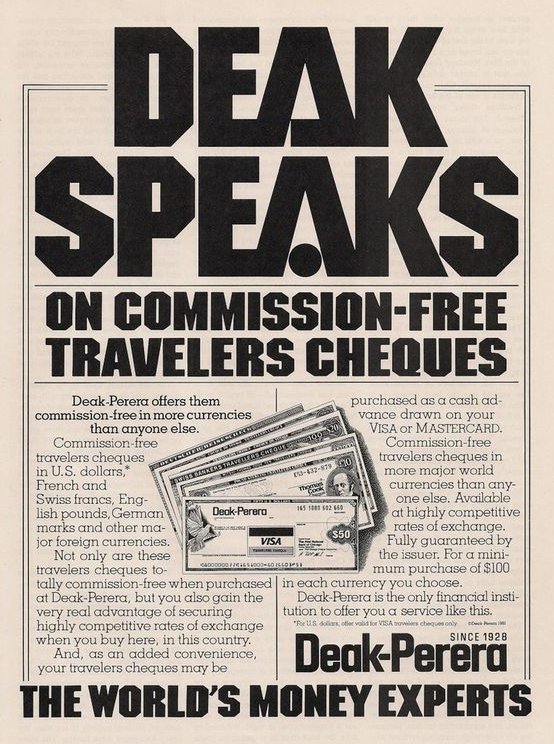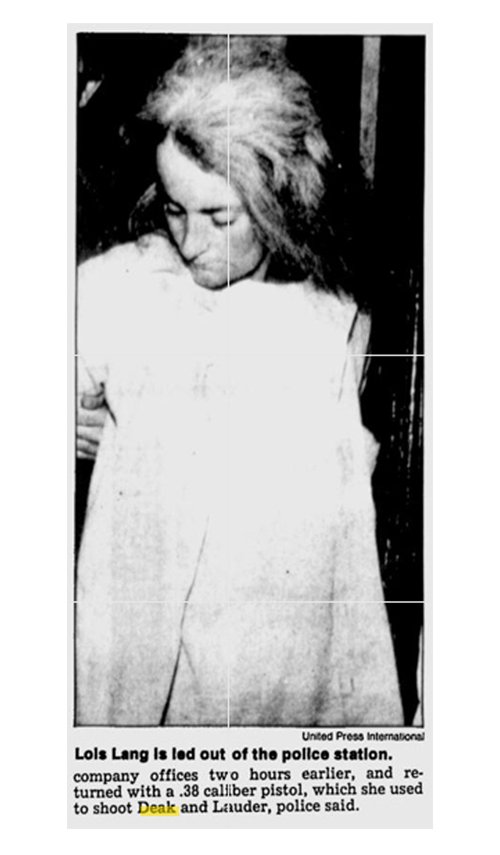It looks like you're using an Ad Blocker.
Please white-list or disable AboveTopSecret.com in your ad-blocking tool.
Thank you.
Some features of ATS will be disabled while you continue to use an ad-blocker.
26
share:
We know that the CIA has long been in the business of implanting their operatives across the political and bureaucratic landscape. Looks like Chuck
Schumer is one of them and knows from experience about getting someone “Six ways from Sunday.”
This is a bizarre and extremely fascinating story that starts in the very strange year of 1947…
…and comes to somewhat of a conclusion in a Wall Street firm in 1985 with the gory blood-spattered bodies of a secretary and CIA bagman extraordinaire Nick Deak.
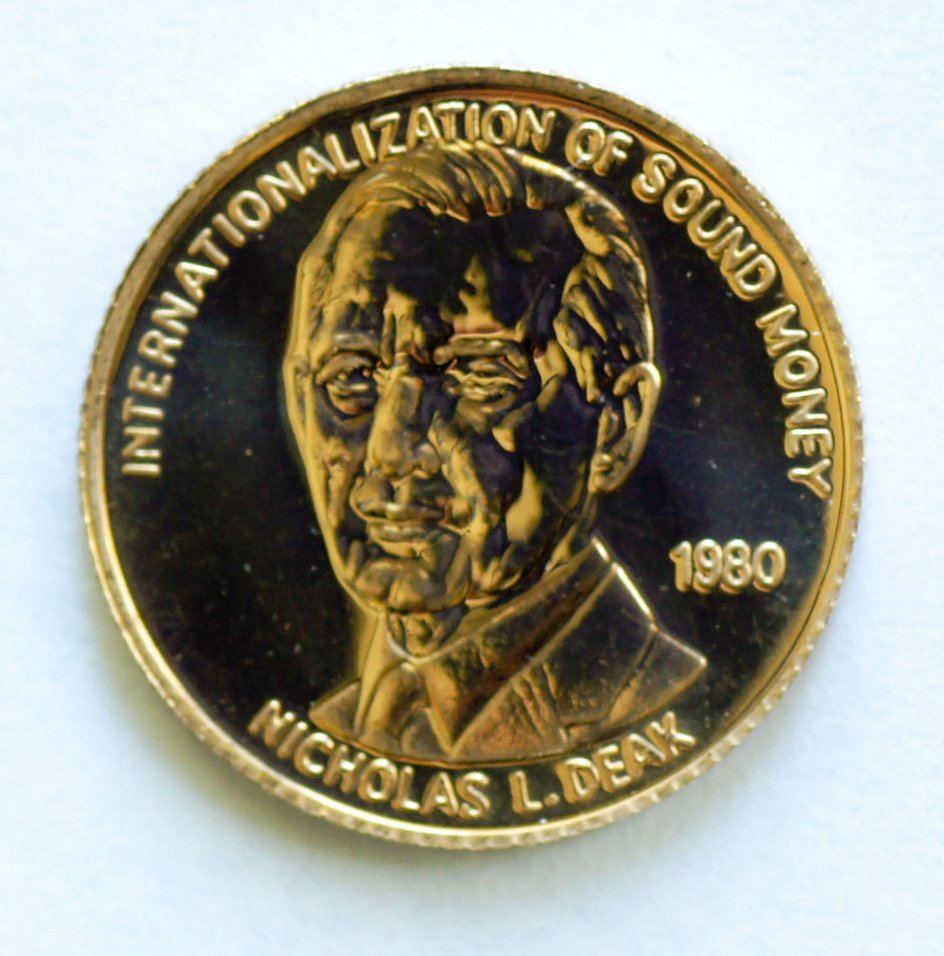
This is a strange and almost unbelievable spy-tale with MK-ULTRA of all things taking a role. Quite possibly a Starring role.
Where does Chuck Schumer fit in in saga that spans Lockheed bribe money to the Japanese Yakuza to Columbian Cartels and so. much. more.
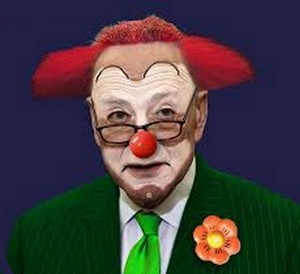
CIA Operative Senator Chuck "Tears of a Clown" Schumer.
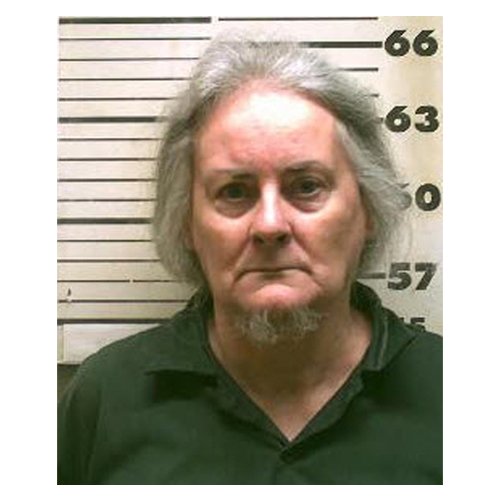 Lois Lang Most Recent Pic
Lois Lang Most Recent Pic
This saga is an extremely wild ride that I can’t even begin to convey here and must be read to be appreciated. If you do skip around make sure you don’t miss the MK-ULTRA connections part.
James Bond and the killer bag lady
This is a bizarre and extremely fascinating story that starts in the very strange year of 1947…
Nick Deak, known as “the James Bond of money,” founded the company in 1947 with the financial backing of the CIA. For more than three decades the company had functioned as an unofficial arm of the intelligence agency and was a key asset in the execution of U.S. Cold War foreign policy.
From humble beginnings as a spook front and flower import business, the firm grew to become the largest currency and precious metals firm in the Western Hemisphere, if not the world.
…and comes to somewhat of a conclusion in a Wall Street firm in 1985 with the gory blood-spattered bodies of a secretary and CIA bagman extraordinaire Nick Deak.

Lang had returned. Frances Lauder let out a fearful “Oh—” shortened by two bangs from a .38 revolver. The first bullet missed. The second struck the secretary between the eyes and exited out the back of her skull. Deak, fit and trim at age 80, bounded out of his office. “What was that?” he shouted.
Lang saw him and turned the corner with purpose, aiming the pistol with both arms. When she had Deak in her sights, she froze, transfixed. “It was as if she’d finally found what she was looking for,” a witness later testified. Deak seized the pause to lunge and grab Lang’s throat with both hands, pressing his body into hers.
She fired once next to Deak’s ear and missed wide, before pushing him away just enough to bring the gun into his body and land a shot above his heart. The bullet ricocheted off his collarbone and shredded his organs.
Deak crumbled onto the floor. “Now you’ve got yours,” said Lang.
From Homecoming Queen to Homeless Killer
A witness later claimed she took out a camera and snapped photographs of her victim’s expiring body. The bag lady then grabbed the banker by the legs, dragged him into his office, and shut the door.
This is a strange and almost unbelievable spy-tale with MK-ULTRA of all things taking a role. Quite possibly a Starring role.
Where does Chuck Schumer fit in in saga that spans Lockheed bribe money to the Japanese Yakuza to Columbian Cartels and so. much. more.
One of Deak’s executives, Theana Kastens, remembers dropping by 29 Broadway and seeing a freshman congressman named Chuck Schumer sitting in Deak’s office chair, his feet up on the desk, rifling through papers.

CIA Operative Senator Chuck "Tears of a Clown" Schumer.

Lang has been in Bedford Hills state prison ever since. Her longtime attorney is deceased. She has grown a beard like a billy goat and ignores all interview requests. Her most recent parole interview was last August. Like every previous date, she failed to attend.
This saga is an extremely wild ride that I can’t even begin to convey here and must be read to be appreciated. If you do skip around make sure you don’t miss the MK-ULTRA connections part.
James Bond and the killer bag lady
edit on
18-12-2019 by The GUT because: (no reason given)
You're trying to tie Schumer to MK-Ultra brainwashed assassin stories of conspiracy theorist fame because someone remembers stopping by a
congressman's office for a reason not given in 1947?
You know that there could've been a million reasons for needing to do so that have nothing to do with it right? Schumer was in on it I'll bet. He arranged for the assassins to go in and kill Epstein while everyone thinks it was the Clintons.
You know that there could've been a million reasons for needing to do so that have nothing to do with it right? Schumer was in on it I'll bet. He arranged for the assassins to go in and kill Epstein while everyone thinks it was the Clintons.
edit on 18-12-2019 by FlyingSquirrel because:
(no reason given)
originally posted by: FlyingSquirrel
You're trying to tie Schumer to MK-Ultra brainwashed assassin stories of conspiracy theorist fame because someone remembers stopping by a congressman's office for a reason not given in 1947?
You know that there could've been a million reasons for needing to do so that have nothing to do with it right? Schumer was in on it I'll bet. He arranged for the assassins to go in and kill Epstein while everyone thinks it was the Clintons.
I thought nowadays that was called "being credibly accused"?
a reply to: FlyingSquirrel
You've got the details all wrong, Squirrel. Schumer was there rifling papers with his feet up on Deak's desk after Deak and his secretary were murdered---not in 1947. Sloppy detective work, Sir.
Neither I nor the article try and connect Cryin' Chuck to the MK-ULTRA aspect although I do think it's a fair consideration that Chuckie was there at someone's bidding---Deak's business was a CIA front. Make of that what you will.
You've got the details all wrong, Squirrel. Schumer was there rifling papers with his feet up on Deak's desk after Deak and his secretary were murdered---not in 1947. Sloppy detective work, Sir.
Neither I nor the article try and connect Cryin' Chuck to the MK-ULTRA aspect although I do think it's a fair consideration that Chuckie was there at someone's bidding---Deak's business was a CIA front. Make of that what you will.
edit on 18-12-2019 by The GUT because: (no reason
given)
a reply to: Guyfriday
Where Mossad ends and the CIA begins is rather murky in my book of spies and who controls whom, Guy. You make an intriguing point to ponder though.
Which reminds me, has Chuck weighed in on the anti-semitism of his progressive colleagues? What did he think about the embassy move? I myself ain't big on Zionism although I'm a big supporter of Israel's right to exist.
Which also reminds me of one of the reasons I made a point about 1947 being a rather strange year. From the National Security Act to the IMF to Roswell to the Dead Sea Scrolls to the death of Aleister Crowley to the sound barrier being broken to the go ahead for the Jewish State.
Lots more interesting things that year too. It's almost, one might say, rather biblical.
1947 Timeline
Where Mossad ends and the CIA begins is rather murky in my book of spies and who controls whom, Guy. You make an intriguing point to ponder though.
Which reminds me, has Chuck weighed in on the anti-semitism of his progressive colleagues? What did he think about the embassy move? I myself ain't big on Zionism although I'm a big supporter of Israel's right to exist.
Which also reminds me of one of the reasons I made a point about 1947 being a rather strange year. From the National Security Act to the IMF to Roswell to the Dead Sea Scrolls to the death of Aleister Crowley to the sound barrier being broken to the go ahead for the Jewish State.
Lots more interesting things that year too. It's almost, one might say, rather biblical.
1947 Timeline
edit on 18-12-2019 by The GUT because: (no reason given)
a reply to: The GUT
Gore Vidal has noted that the NSA of 1947 was nothing more than a money scam and that the "Cold War" was needed in order to facilitate it. Funny how that worked out, that when one of the "Deep State" guys sat in the White House the "Cold War" ended. That's neither here nor there.
When I was in High School and took a summer job for a construction company, one of my jobs was to seal the outside of the foundation walls. I learned that you can tell how well a building will be by looking at the care taken in setting up the foundation. So I always thought it weird that Mossad was tossed together by a leader in the World Zionist Organization, and a kid from New York that liked to push-and-pull politics from the shadows (though personally I think people should be more concerned about Shabak activities).
Schumer is strangely quiet about the anti-Semitic rantings of his fellow Congress People, but we don't really know what he's up to anyways. From having nonregistered alien children in his office for press conferences, to quietly dismissing NIXVM for having his financial data at their headquarters, what do we really know about Schumer and those who pull his strings?
Gore Vidal has noted that the NSA of 1947 was nothing more than a money scam and that the "Cold War" was needed in order to facilitate it. Funny how that worked out, that when one of the "Deep State" guys sat in the White House the "Cold War" ended. That's neither here nor there.
When I was in High School and took a summer job for a construction company, one of my jobs was to seal the outside of the foundation walls. I learned that you can tell how well a building will be by looking at the care taken in setting up the foundation. So I always thought it weird that Mossad was tossed together by a leader in the World Zionist Organization, and a kid from New York that liked to push-and-pull politics from the shadows (though personally I think people should be more concerned about Shabak activities).
Schumer is strangely quiet about the anti-Semitic rantings of his fellow Congress People, but we don't really know what he's up to anyways. From having nonregistered alien children in his office for press conferences, to quietly dismissing NIXVM for having his financial data at their headquarters, what do we really know about Schumer and those who pull his strings?
edit on 18-12-2019 by Guyfriday because: I needed a Dictionary, and all I got was a Thesaurus Rex. Damn you Auto-Incorrect!
I know a few more things about them,” he said. “But this gets a little dicey. I don’t know how to play that game. I don’t want to be the next target.”
That was an interesting story. Thanks for bringing it to us, G!
It’s a cryin’ [Chuck] shame that all the best ones seem to end in the same context as the above statement (quoted from the end of the article).
With every new story to ponder, however, we come closer to dissolving the notoriously naive belief that powerful institutions would never weaponize the human mind in such a way.....
Some serious synchronicity in that story with recent explorations of my own, and thankfully it’s not the billy goats beard. 🐐
🥂
originally posted by: SouthernGift
Some serious synchronicity in that story with recent explorations of my own, and thankfully it’s not the billy goats beard. 🐐
🥂
That sounds like a good thread. If so make sure I don't miss it please, Ma'am. The first time I ran across this story I did a little digging and found a few details not covered in the Salon article that were intriguing and hinted a little more about possible perps. If anyone finds any more on this please share!
Then I promptly forgot all about it. I was reminded today after listening to Chuck running his yap.
After my own look into MK (and similar programs) I came to the conclusion that when they've had to talk about it they always highlighted the drugs part as a red herring when the real secret has more to do with hypnotism and other manipulative techniques.
Of course pharmaceuticals come into play in that too but the real secret is in psychological manipulation I'm quite certain.
I actually wondered if you'd see this and find it interesting, SG. So glad you stopped in to comment.
edit on 18-12-2019 by The GUT
because: (no reason given)
This will make for great reading over the holiday.
I love reading this stuff, looking forward to seeing where Schumer fits in.....he comes across as an opportunist.
I look forward to a follow up post later.
Thanks dude, great topic if nothing else!
I love reading this stuff, looking forward to seeing where Schumer fits in.....he comes across as an opportunist.
I look forward to a follow up post later.
Thanks dude, great topic if nothing else!
originally posted by: The GUT
We know that the CIA has long been in the business of implanting their operatives across the political and bureaucratic landscape. Looks like Chuck Schumer is one of them and knows from experience about getting someone “Six ways from Sunday.”
This is a bizarre and extremely fascinating story that starts in the very strange year of 1947…
Nick Deak, known as “the James Bond of money,” founded the company in 1947 with the financial backing of the CIA. For more than three decades the company had functioned as an unofficial arm of the intelligence agency and was a key asset in the execution of U.S. Cold War foreign policy.
From humble beginnings as a spook front and flower import business, the firm grew to become the largest currency and precious metals firm in the Western Hemisphere, if not the world.
…and comes to somewhat of a conclusion in a Wall Street firm in 1985 with the gory blood-spattered bodies of a secretary and CIA bagman extraordinaire Nick Deak.
Lang had returned. Frances Lauder let out a fearful “Oh—” shortened by two bangs from a .38 revolver. The first bullet missed. The second struck the secretary between the eyes and exited out the back of her skull. Deak, fit and trim at age 80, bounded out of his office. “What was that?” he shouted.
Lang saw him and turned the corner with purpose, aiming the pistol with both arms. When she had Deak in her sights, she froze, transfixed. “It was as if she’d finally found what she was looking for,” a witness later testified. Deak seized the pause to lunge and grab Lang’s throat with both hands, pressing his body into hers.
She fired once next to Deak’s ear and missed wide, before pushing him away just enough to bring the gun into his body and land a shot above his heart. The bullet ricocheted off his collarbone and shredded his organs.
Deak crumbled onto the floor. “Now you’ve got yours,” said Lang.
From Homecoming Queen to Homeless Killer
A witness later claimed she took out a camera and snapped photographs of her victim’s expiring body. The bag lady then grabbed the banker by the legs, dragged him into his office, and shut the door.
This is a strange and almost unbelievable spy-tale with MK-ULTRA of all things taking a role. Quite possibly a Starring role.
Where does Chuck Schumer fit in in saga that spans Lockheed bribe money to the Japanese Yakuza to Columbian Cartels and so. much. more.
One of Deak’s executives, Theana Kastens, remembers dropping by 29 Broadway and seeing a freshman congressman named Chuck Schumer sitting in Deak’s office chair, his feet up on the desk, rifling through papers.
CIA Operative Senator Chuck "Tears of a Clown" Schumer.
Lois Lang Most Recent Pic
Lang has been in Bedford Hills state prison ever since. Her longtime attorney is deceased. She has grown a beard like a billy goat and ignores all interview requests. Her most recent parole interview was last August. Like every previous date, she failed to attend.
This saga is an extremely wild ride that I can’t even begin to convey here and must be read to be appreciated. If you do skip around make sure you don’t miss the MK-ULTRA connections part.
James Bond and the killer bag lady
Thank you for digging something up that is actually of interest!
Scratching around on this gentleman produces some interesting results:
THE GOLDBUG, VARIATIONS IV -(direct .pdf link)
Elsewhere:
Deep Events and the CIA�s Global Drug Connection
Still elsewhere:

Source -(direct .pdf link) @ cia.gov
Well, that's it from me for now. I will keep sniffing around on this tomorrow if there is any interest in whatever I might uncover.
Scratching around on this gentleman produces some interesting results:
Nicholas Deak, principal of Deak-Perera, a banking firm in New York specializing in precious metals and foreign exchange in the 1970s, was of Hungarian origin. He worked for OSS (predecessor of the CIA) during World War II out of his base in Switzerland. He has told me that agents operating in enemy territory were issued gold coins. Later in the Vietnam War American airmen were also issued gold coins. In each case the idea was that gold might buy them freedom in case they were captured, something that paper money would be decidedly unable to accomplish.
Deak believed that the top brass at the Fed carried part of their personal savings in the form of gold coins. They certainly appear to understand gold better than Krugman.
THE GOLDBUG, VARIATIONS IV -(direct .pdf link)
Elsewhere:
One significant organizer of the post-war global drug connection -- between CIA, organized crime, and their mutual interest in drug-trafficking -- was former OSS officer Paul L.E. Helliwell. Helliwell, who was head of the Special Intelligence branch of OSS in Kunming, and later an officer of OPC and the CIA, was simultaneously the owner of the Bank of Perrine in Key West, Florida, "a two-time laundromat for the Lansky mob and the CIA," and its sister Bank of Cutler Ridge. Here we shall see a number of interrelated mob-CIA money-laundering banks in the global drug connection, of which the greatest was undoubtedly the Bank of Credit and Commerce International (BCCI).
...
The most common explanation is that the CIA not only used the bank, but had helped develop it. Journalists Peter Truell and Larry Gurwin, the authors of the definitive book on BCCI, speculated that the CIA�s relationship with its founder, Agha Hasan Abedi, might have gone back to before BCCI�s founding in 1972. They observed also that BCCI was only the latest in an overlapping series of money-laundering banks that did services for the CIA � Deak & Company, Castle Bank & Trust, and Nugan Hand.
...
The CIA office in Chiang Mai, when the main business of the city was opium trafficking, was on the same floor as the local office of the DEA. According to Jonathan Kwitny, "The DEA receptionist answered Nugan Hand�s phone and took messages when the bank�s representatives were out." Nugan Hand�s representative there, Neil Evans has said he was present when Michael Hand and Ron Pulger-Frame � the former Deak & Company courier who went to work at Nugan Hand � discussed the shipment of CIA money to the Middle East, Saudi Arabia, and Panama. Evans has said Nugan Hand moved $50 to $60 million at a time for the CIA, and also that Nugan Hand was involved in Third World arms deals.
...
-- The interlocking finance company Deak & Company, founded by OSS veteran Nicholas Deak, "was reportedly used by the CIA to finance covert operations, including the 1953 overthrow of democratically elected Iranian Prime Minister Mohammed Mossadeq."
...
-- The overthrow of democratically elected Indonesian President Sukarno in 1965 was achieved in part by covert assistance through Lockheed Corporation payoffs, and in part by the intervention of Sasakawa Ryoichi, a CIA agent of influence, along with his friend Kodama Yoshio, with the yakuza in Japan. Sasakawa and Kodama were also recipients of Lockheed payoffs facilitated partly by Deak & Company, and partly on the scene by Shig Katayama, whose ID Corp. in the Cayman Islands conducted mysterious business transactions with Helliwell�s Castle Bank.
Deep Events and the CIA�s Global Drug Connection
Still elsewhere:

Source -(direct .pdf link) @ cia.gov
Well, that's it from me for now. I will keep sniffing around on this tomorrow if there is any interest in whatever I might uncover.
edit on 19-12-2019 by jadedANDcynical because: Fixed CIA document link
edit on 19-12-2019 by jadedANDcynical because: No
really, I fixed it this time
a reply to: jadedANDcynical
Heck yes there's interest, JC! Thank you for bringing your formidable skillz. Looking forward to more.
Heck yes there's interest, JC! Thank you for bringing your formidable skillz. Looking forward to more.
I am flattered that the GUT would anticipate my interest!! 😉
Drugs are a red herring.... they may have revealed the Gate and given us glimpses into it..... but I don’t necessarily believe they are what opens full access. I also believe full access should terrify anybody paying attention. 😩
Currently 69 pages deep into a 361 page dissertation from 2015, “The Revolution Will Be Videotaped: Making a Technology of Consciousness in the Long 1960s”
Tiny excerpt:
To fill the gap between the MKUltra research of the 50’s-80’s, the consciousness experiments at SRI and the rise of our, ahem, media “problems” of today..... algorithms, social media, Hollywood, mainstream news, increasing experiences of synchronicity and, the electric/electromagnetic universe theory.
I could be wrong, but I think super assassins like miss Lang are the tip of the iceberg...
What might a weaponized collective consciousness be capable of? Theoretically speaking of course.
If I ever get the sourced evidence to back up my speculations, and can coherently express them, you’ll def. get an alert! 😉🥂
In the meantime, I have done a dig on miss Lang herself, and, as per the usual, come up pretty empty... it interests me as much to know the hidden reasons why they use particular subjects than what they use them for or why.... like it’s the secret ingredient in the Milos sweet tea or something, for a silly comparison. 🤷🏼♀️
a reply to: The GUT
Drugs are a red herring.... they may have revealed the Gate and given us glimpses into it..... but I don’t necessarily believe they are what opens full access. I also believe full access should terrify anybody paying attention. 😩
Currently 69 pages deep into a 361 page dissertation from 2015, “The Revolution Will Be Videotaped: Making a Technology of Consciousness in the Long 1960s”
Tiny excerpt:
“To the acidheads of San Francisco, '___' offered the experience of melted psychological boundaries and the feeling of oneness; to rural communards, the birch-bark crib offered a way to put oneself between industry and nature, and to build an artifact that unified the two realms. In its time, the Apple-I also offered much more than a simple hobbyist’s experiment. It presented a chance to repurpose high technologies and so to extend the individual’s reach into the universe of information.”
Though he didn’t use the term, Roszak also saw this experimentation with technologies of consciousness as a distinguishing characteristic of the counterculture. “If we accept the proposition that the counter culture is, essentially, an exploration of the politics of consciousness,”
To fill the gap between the MKUltra research of the 50’s-80’s, the consciousness experiments at SRI and the rise of our, ahem, media “problems” of today..... algorithms, social media, Hollywood, mainstream news, increasing experiences of synchronicity and, the electric/electromagnetic universe theory.
I could be wrong, but I think super assassins like miss Lang are the tip of the iceberg...
What might a weaponized collective consciousness be capable of? Theoretically speaking of course.
If I ever get the sourced evidence to back up my speculations, and can coherently express them, you’ll def. get an alert! 😉🥂
In the meantime, I have done a dig on miss Lang herself, and, as per the usual, come up pretty empty... it interests me as much to know the hidden reasons why they use particular subjects than what they use them for or why.... like it’s the secret ingredient in the Milos sweet tea or something, for a silly comparison. 🤷🏼♀️
a reply to: The GUT
a reply to: pigsy2400
When I first read about RHIC-EDOM years ago I found it rather far-fetched. Turns out the possibilities are there to at least some degree. Some of your research a year or so ago actually caused me to give that subject a fresh look in light of scientific advances---although that possibility didn't enter my mind in connection with this thread.
Having said that, I believe dominant control of personality can be achieved in a percentage of the public using an assortment of purely psychological (and less sophisticated physical) methods.
Throw in some frequency manipulation, though, and no telling what can be achieved on a mass scale. Aquino mentions some interesting research & concepts along those lines in the updated edition of Mindwar and he has also spoken a little about it here. With Aquino---a grain of salt is always handy to have in stock however---but these particular assertions seem to hold some water.
I've mentioned more than once that a forum such as this would be an ideal testing ground for all kinds of subjects we know for a fact interest the M.I.C. and for which funds are available. Narrative control, memes, etc. Maybe even frequency affects. Not just as a convenient test bed but an almost ideal one in which the unwitting subjects provide exceptional feedback.
When I first read about RHIC-EDOM years ago I found it rather far-fetched. Turns out the possibilities are there to at least some degree. Some of your research a year or so ago actually caused me to give that subject a fresh look in light of scientific advances---although that possibility didn't enter my mind in connection with this thread.
Having said that, I believe dominant control of personality can be achieved in a percentage of the public using an assortment of purely psychological (and less sophisticated physical) methods.
Throw in some frequency manipulation, though, and no telling what can be achieved on a mass scale. Aquino mentions some interesting research & concepts along those lines in the updated edition of Mindwar and he has also spoken a little about it here. With Aquino---a grain of salt is always handy to have in stock however---but these particular assertions seem to hold some water.
I've mentioned more than once that a forum such as this would be an ideal testing ground for all kinds of subjects we know for a fact interest the M.I.C. and for which funds are available. Narrative control, memes, etc. Maybe even frequency affects. Not just as a convenient test bed but an almost ideal one in which the unwitting subjects provide exceptional feedback.
Piece is from 2014 but adds some expanded detail on this--to me--rather fascinating and bizarre morality tale:
New Evidence in the Assassination of CIA Wall Street Financier Nicholas Deak
New Evidence in the Assassination of CIA Wall Street Financier Nicholas Deak
new topics
-
Anti-Government Protest in Serbia
Social Issues and Civil Unrest: 4 hours ago -
The Effects of Electric Fields and Plasma on Plant Growth
Science & Technology: 4 hours ago
top topics
-
NYPD Chief Jeffrey Maddrey Resigns - Forced Officers to Give Sex for Overtime Pay and Favors.
Posse Comitatus: 14 hours ago, 10 flags -
Swarms of tiny 'ant-like' robots lift heavy objects and navigate obstacles
Science & Technology: 13 hours ago, 6 flags -
The Effects of Electric Fields and Plasma on Plant Growth
Science & Technology: 4 hours ago, 6 flags -
Anti-Government Protest in Serbia
Social Issues and Civil Unrest: 4 hours ago, 5 flags -
The Daily Mail trying to imply “it’s aliens”
Dissecting Disinformation: 12 hours ago, 4 flags
active topics
-
I have a friend. . .
General Chit Chat • 26 • : randomtangentsrme -
-@TH3WH17ERABB17- -Q- ---TIME TO SHOW THE WORLD--- -Part- --44--
Dissecting Disinformation • 3781 • : Thoughtful3 -
Incoming TRUMP Admin will Declare a National Emergency to Mass Deport People Here Illegally.
Social Issues and Civil Unrest • 123 • : WeMustCare -
The Effects of Electric Fields and Plasma on Plant Growth
Science & Technology • 4 • : nerbot -
Anti-Government Protest in Serbia
Social Issues and Civil Unrest • 3 • : Imhere -
U.S. Officially Withdraws From the World Health Organization
Breaking Alternative News • 75 • : WeMustCare -
The Carpet Coating that Attacked the Environment
Medical Issues & Conspiracies • 17 • : Shoshanna -
Statements of Intent from Incoming Trump Administration Members - 2025 to 2029.
2024 Elections • 49 • : WeMustCare -
Democrat Leader Hakeem Jeffries Promotes HATE After 2nd Attempt to Murder Trump in 2024.
US Political Madness • 43 • : BernnieJGato -
‘Something horrible’: Somerset pit reveals bronze age cannibalism
Ancient & Lost Civilizations • 13 • : CosmicFocus
26

